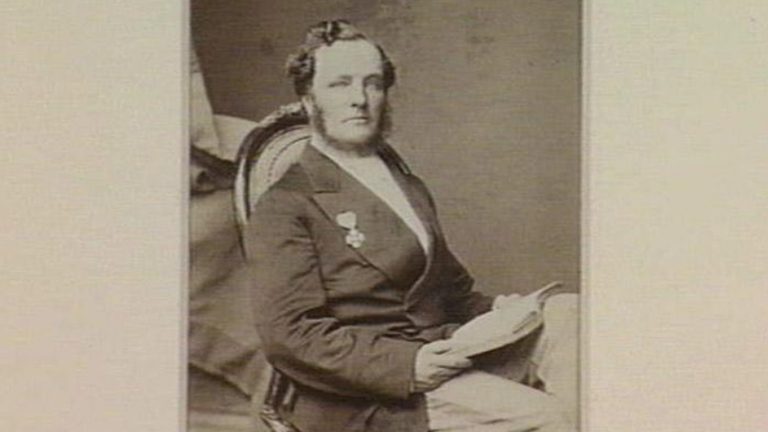
Frederick McCoy
Born into a Roman Catholic family in 1823, Frederick McCoy was raised in Dublin. The son of a physician and professor, he was a precocious youth who shared the 19th century passion for natural history, publishing his first scientific paper in his mid-teens.
In 1846 he was invited by Adam Sedgwick to arrange the fossil collections at Cambridge's Woodwardian Museum. Later, whilst still under Sedgwick's mentorship, he converted to Anglicanism.
McCoy's career turning-point came in 1855 when he published his major work, Synopsis of the British Palaeozoic Rocks and Fossils, and was appointed Professor of Natural Sciences at the University of Melbourne. From this platform he cemented his Australian reputation, becoming Director of the National Museum, State Palaeontologist and President of the Royal Society of Victoria, amongst a host of other responsibilities.
Firmly entrenched in Melbourne's Anglican establishment, McCoy used his dual roles as University Professor and Museum Director to publish on the zoology and palaeontology of Victoria, as well as assembling one of the finest natural history collections outside Europe and North America.
McCoy corresponded widely with his peers in Europe, exchanging information, ideas and specimens. However his reputation has been diminished by his opposition to Darwin's theories. The memory of several protracted public arguments has also drawn attention away from his considerable achievements.
While receiving international recognition, McCoy's last decade was something of a disappointment; his worldview had become superseded and the institutions he had held so firmly were slipping from his grasp. He died in 1899, just before the turn of a new century.*
*Based on Malcolm Carkeek, 'Sir Frederick McCoy FRS - an Overview', in The Victorian Naturalist: McCoy Special Issue, 2001; and Doug McCann, 'Frederick McCoy and the Naturalist Tradition', in The Victorian Naturalist: McCoy Special Issue, 2001.


